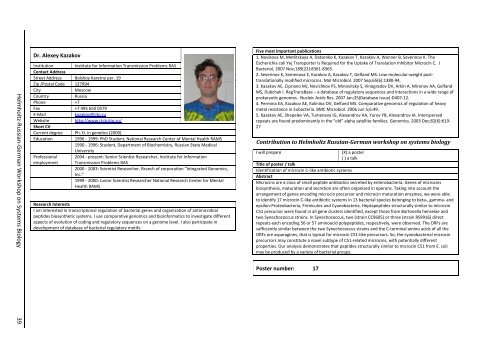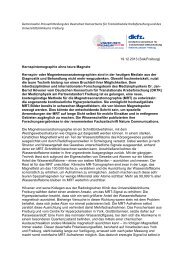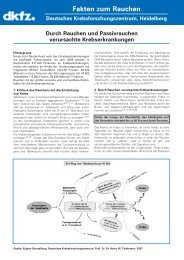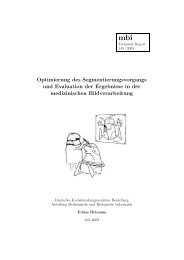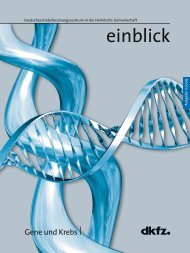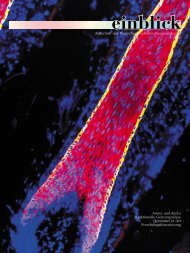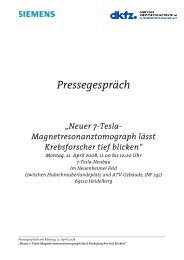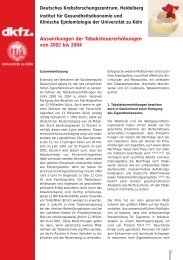Helmholtz Russian-German Workshop on Systems Biology Moscow ...
Helmholtz Russian-German Workshop on Systems Biology Moscow ...
Helmholtz Russian-German Workshop on Systems Biology Moscow ...
Create successful ePaper yourself
Turn your PDF publications into a flip-book with our unique Google optimized e-Paper software.
<str<strong>on</strong>g>Helmholtz</str<strong>on</strong>g>‐<str<strong>on</strong>g>Russian</str<strong>on</strong>g>‐<str<strong>on</strong>g>German</str<strong>on</strong>g> <str<strong>on</strong>g>Workshop</str<strong>on</strong>g> <strong>on</strong> <strong>Systems</strong> <strong>Biology</strong> 39<br />
Dr. Alexey Kazakov<br />
Instituti<strong>on</strong><br />
C<strong>on</strong>tact Address<br />
Institute for Informati<strong>on</strong> Transmissi<strong>on</strong> Problems RAS<br />
Street Address Bolshoy Karetny per. 19<br />
Zip /Postal Code 127994<br />
City <strong>Moscow</strong><br />
Country Russia<br />
Ph<strong>on</strong>e +7<br />
Fax +7 495 650 0579<br />
E‐Mail kazakov@iitp.ru<br />
Website<br />
Short CV<br />
http://www.rtcb.iitp.ru/<br />
Current degree Ph. D. in genetics (2000)<br />
Educati<strong>on</strong> 1996 ‐ 1999: PhD Student, Nati<strong>on</strong>al Research Center of Mental Health RAMS<br />
1990 ‐ 1996: Student, Department of Biochemistry, <str<strong>on</strong>g>Russian</str<strong>on</strong>g> State Medical<br />
University<br />
Professi<strong>on</strong>al<br />
employment<br />
2004 ‐ present: Senior Scientist Researcher, Institute for Informati<strong>on</strong><br />
Transmissi<strong>on</strong> Problems RAS<br />
2000 ‐ 2003: Scientist Researcher, Branch of corporati<strong>on</strong> “Integrated Genomics,<br />
Inc.”<br />
1999 ‐ 2000: Junior Scientist Researcher Nati<strong>on</strong>al Research Center for Mental<br />
Health RAMS<br />
Research Interests<br />
I am interested in transcripti<strong>on</strong>al regulati<strong>on</strong> of bacterial genes and organizati<strong>on</strong> of antimicrobial<br />
peptides biosynthetic systems. I use comparative genomics and bioinformatics to investigate different<br />
aspects of evoluti<strong>on</strong> of coding and regulatory sequences <strong>on</strong> a genome level. I also participate in<br />
development of database of bacterial regulatory motifs.<br />
Five most important publicati<strong>on</strong>s<br />
1. Novikova M, Metlitskaya A, Datsenko K, Kazakov T, Kazakov A, Wanner B, Severinov K. The<br />
Escherichia coli Yej Transporter Is Required for the Uptake of Translati<strong>on</strong> Inhibitor Microcin C. J<br />
Bacteriol, 2007 Nov;189(22):8361‐8365.<br />
2. Severinov K, Semenova E, Kazakov A, Kazakov T, Gelfand MS. Low‐molecular‐weight post‐<br />
translati<strong>on</strong>ally modified microcins. Mol Microbiol. 2007 Sep;65(6):1380‐94.<br />
3. Kazakov AE, Cipriano MJ, Novichkov PS, Minovitsky S, Vinogradov DV, Arkin A, Mir<strong>on</strong>ov AA, Gelfand<br />
MS, Dubchak I. RegTransBase – a database of regulatory sequences and interacti<strong>on</strong>s in a wide range of<br />
prokaryotic genomes. Nucleic Acids Res. 2007 Jan;35(Database issue):D407‐12.<br />
4. Permina EA, Kazakov AE, Kalinina OV, Gelfand MS. Comparative genomics of regulati<strong>on</strong> of heavy<br />
metal resistance in Eubacteria. BMC Microbiol. 2006 Jun 5;6:49.<br />
5. Kazakov AE, Shepelev VA, Tumeneva IG, Alexandrov AA, Yurov YB, Alexandrov IA. Interspersed<br />
repeats are found predominantly in the “old” alpha satellite families. Genomics. 2003 Dec;82(6):619‐<br />
27<br />
C<strong>on</strong>tributi<strong>on</strong> to <str<strong>on</strong>g>Helmholtz</str<strong>on</strong>g> <str<strong>on</strong>g>Russian</str<strong>on</strong>g><str<strong>on</strong>g>German</str<strong>on</strong>g> workshop <strong>on</strong> systems biology<br />
I will prepare<br />
(X) a poster<br />
( ) a talk<br />
Title of poster / talk<br />
Identificati<strong>on</strong> of microcin C‐like antibiotic systems<br />
Abstract<br />
Microcins are a class of small peptide antibiotics secreted by enterobacteria. Genes of microcins<br />
biosynthesis, maturati<strong>on</strong> and secreti<strong>on</strong> are often organized in oper<strong>on</strong>s. Taking into account the<br />
arrangement of genes encoding microcin precursor and microcin maturati<strong>on</strong> enzymes, we were able<br />
to identify 17 microcin C‐like antibiotic systems in 13 bacterial species bel<strong>on</strong>ging to beta‐, gamma‐ and<br />
epsil<strong>on</strong>‐Proteobacteria, Firmicutes and Cyanobacteria. Heptapeptides structurally similar to microcin<br />
C51 precursor were found in all gene clusters identified, except those from Bart<strong>on</strong>ella henselae and<br />
two Synechococcus strains. In Synechococcus, two (strain CC9605) or three (strain RS9916) direct<br />
repeats each encoding 56 or 57 aminoacid polypeptides, respectively, were observed. The ORFs are<br />
sufficiently similar between the two Synechococcus strains and the C‐terminal amino acids of all the<br />
ORFs are asparagines, that is typical for microcin C51‐like precursors. So, the cyanobacterial microcin<br />
precursors may c<strong>on</strong>stitute a novel subtype of C51‐related microcins, with potentially different<br />
properties. Our analysis dem<strong>on</strong>strates that peptides structurally similar to microcin C51 from E. coli<br />
may be produced by a variety of bacterial groups.<br />
Poster number: 17


